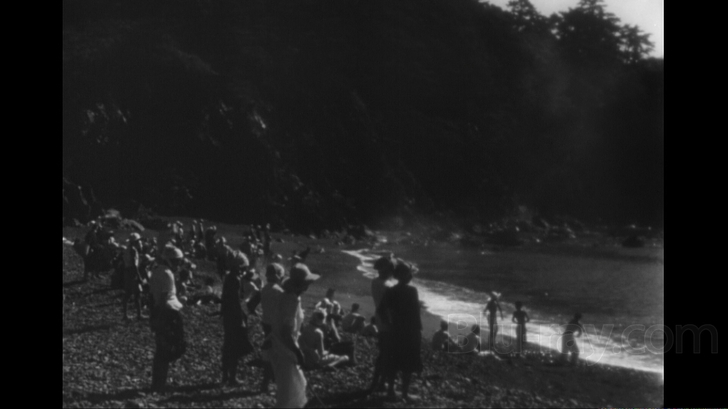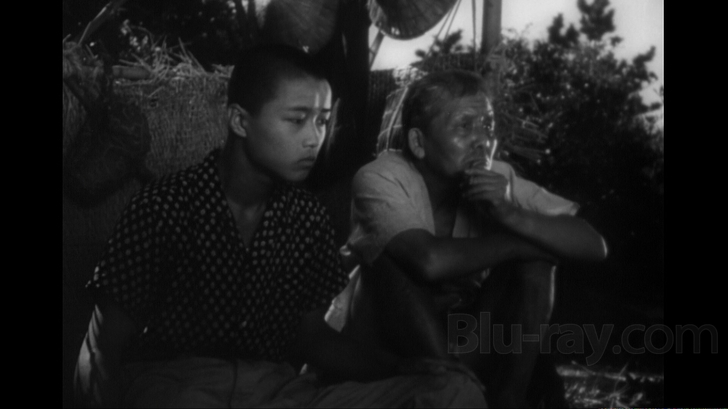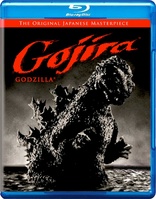Gojira Blu-ray Movie
HomeGojira Blu-ray Movie 
GodzillaClassic Media | 1954 | 98 min | Not rated | Sep 22, 2009
Movie rating
8.1 | / 10 |
Blu-ray rating
| Users | 3.8 | |
| Reviewer | 3.5 | |
| Overall | 3.5 |
Overview
Gojira (1954)
A fire-breathing behemoth terrorizes Japan after an atomic bomb awakens it from its centuries-old sleep.
Starring: Takashi Shimura, Akihiko Hirata, Fuyuki Murakami, Akira Takarada, Momoko KôchiDirector: Ishiro Honda
| Foreign | 100% |
| Horror | 36% |
| Sci-Fi | 20% |
| Drama | 5% |
| Thriller | Insignificant |
Specifications
Video
Video codec: MPEG-4 AVC
Video resolution: 1080i
Aspect ratio: 1.47:1
Original aspect ratio: 1.37:1
Audio
Japanese: LPCM Mono
Subtitles
English
Discs
25GB Blu-ray Disc
Single disc (1 BD)
Playback
Region free
Review
Rating summary
| Movie | 4.0 | |
| Video | 2.0 | |
| Audio | 2.5 | |
| Extras | 3.0 | |
| Overall | 3.5 |
Gojira Blu-ray Movie Review
The original 1954 Japanese version of Godzilla may surprise longtime fans of subsequent knockoffs.
Reviewed by Jeffrey Kauffman September 5, 2009If you’ve ever seen the Alain Resnais classic Hiroshima, Mon Amour, you know that film begins with some of the most disturbing images ever caught on celluloid—actual documentary footage of survivors of the atomic blasts that rocked Japan and, either in spite of or because of the horror, helped bring about a quick end to World War II. The images of people horribly mutilated by radiation are something that can never be erased from the memory, and they’re part of what makes the Resnais film so instantly chilling and disquieting. It may not seem possible, since the character of Godzilla has entered the public lexicon and been degraded over several decades to the point where it’s little more than camp, but in the original 1954 Japanese version of the film, Gojira, that same horror was sought to be depicted, if not quite as gruesomely as it was shown in Hiroshima, Mon Amour. For American audiences who may have been introduced to the character either through the 1956 Americanized edit of the original Japanese film, starring Raymond Burr in interpolated segments, or, perhaps even worse, in any of a score of films that appeared throughout the 1960s and 1970s, where the original concept was obscured behind what was often a morass of ridiculousness, it may be hard to think of the character, or the film, as something serious. And yet, a clear headed response to Gojira shows that it is indeed a remarkably somber and sobering affair, less of a traditional monster movie, and really almost more of an anti-war screed on a par with Dalton Trumbo’s Johnny Got His Gun (if less related to one specific person’s nightmare, choosing instead to focus on an entire people’s tragedy, albeit told through some very intimate individual stories).

Tokyo, devastated after Godzilla's attack, an obvious recreation of the effects of the atomic bombings of Hiroshima and Nagasaki.
Is there anyone who doesn’t already know the basics of the Godzilla story? Atomic testing off the coast of Japan awakens an undersea beast “from the Jurassic period” (misattributed in the film, some say purposefully to make it contemporaneous with the arrival of Mankind, to a mere two million years ago) which then goes on a feral rampage, destroying most of Tokyo in the process. That’s certainly the Godzilla those of us in the United States (and probably most of the Western world) remember, and, frankly, that’s the basis of most of the follow up Godzilla films—a big, ugly dinosaur tramples over various cities (Godzilla became more egalitarian, as it were, after the first film and moved on to several other world capitals).
But in this original 1954 version, largely the product of director and co-scenarist Ishiro Honda, the monster element is almost a second thought, virtually a MacGuffin of sorts that simply serves as a symbol for what’s really going on—a very ruminative discourse over the effects of the atomic bomb, both physically and perhaps even more importantly, psychologically. We meet Dr. Yamane (Takashi Shimura), a paleontologist who struggles with his angst over wanting to preserve Godzilla for research purposes, while at the same time recoiling in horror over the beast’s proclivity for destruction. Yamane’s daughter Emiko (Momoko Kochi) is betrothed, in an arranged marriage, to Serizawa (Akihito Hiraka), a scientist who has been personally injured by the atomic bomb (again, both physically and psychologically). Emiko is secretly in love with Ogata (Akira Takarata), and she spends much of the film trying to figure out a way to detach herself from Serizawa without further damaging his fragile psyche. This is not your typical Godzilla fare, at least the Godzilla that so many of us who were introduced to the character in the patently camp films of the 60’s and 70’s may remember.
Perhaps because of the film’s relatively minuscule budget, or because of Honda’s own emphasis on the humans rather than the titular “monster,” a lot of Gojira plays out on a personal, small scale. In fact, even the destruction of Tokyo, a sequence rightly lauded as delivering the goods, at least early-50’s style, in what may now seem as somewhat primitive special effects, is repeatedly told from the perspective of individuals' reactions to it. Not only do we get the major characters, most of whom simply watch from afar, more compellingly, we’re introduced, at least briefly, to various semi-anonymous participants who meet their fate during Godzilla’s rampage. Little cameos like a mother clutching her children to her breast while telling them that soon they’ll join their father in heaven (a father who, it’s implied, has either died due to the atomic bomb or his participation in World War II), provide a chilling and very personal moment, and one completely at odds with the usual American tropes in a monster film.
Structurally, the film will probably seem quite slow and surprisingly subdued to many in the modern audience. Honda takes his time, roughly the first third of the film, simply introducing characters while hinting at the ultimate big reveal of Godzilla. Godzilla’s Tokyo rampage fills the second third of the film, and provides most of the special effects sequences, including some quite sophisticated (for its day) process and matte shots, including superbly crafted scenes of Godzilla’s atomic breath melting electric towers (rightly one of the most famous images from the film). After the devastation has ended, we again revert to the main characters, as the love triangle plays out against the attempts to permanently quiet Godzilla. If jaded eyes and ears come to this film expecting something akin to a summer blockbuster, even vintage 1954, they’re almost certain to be disappointed. This film is really amazingly philosophical, full of both veiled and explicit commentary about the atomic destruction of Japan in Hiroshima and Nagasaki, and a great deal of the dialogue seems written expressly to give vent to the Japanese collective soul’s attempt to reconcile itself with its horrifying fate.
This is a relentlessly dark (both literally and figuratively) film that perfectly captures its home country's agonized reactions to a devastating occurrence. Taken on its own merits, removed from the intervening decades and reimaginings the character has repeatedly gone through, Gojira emerges as one of the most intellectual "monster" movies ever made, as disturbing in its own way as those documentary images utilized in the opening of Resnais' Hiroshima, Mon Amour.
Gojira made it to DVD in a nice clamshell set a couple of years ago with two DVDs
offering both the original Japanese version as well as the Raymond Burr American edit. Also
included was a nice souvenir booklet. This new Blu-ray offers only the Japanese version along
with the two featurettes which accompanied the original DVD release.
Gojira Blu-ray Movie, Video Quality 

I wish I had better news to report on this BD's image quality. The good news is the film is preserved in a somewhat unusual aspect ratio of 1.47:1, offering a slightly wider image than standard Academy ratio. Unfortunately, the film is badly in need of a major restoration effort, something that was apparent with the original DVD release a few years ago and which is only all the more apparent with the superior resolution of Blu-ray. While contrast is still surprisingly strong, black levels vary considerably from scene to scene (and sometimes within a scene), at times offering deeply nuanced shades that allow the nighttime scenes to still bristle with detail, but at other times offer only a murky, shadowy mishmash. The worst part of this transfer is the virtually nonstop specks, scratches, and even emulsion damage. Part of this was inherent in the original negative, due to the primitive working conditions and the multi-pass opticals which only highlighted dust and debris as elements were assembled. (There's also quite a bit of pretty shoddy stock footage, obviously originally from 16mm masters, that is even worse than the bulk of the film). While grain is apparent, it's natural looking and this film has obviously had nary a moment of DNR applied to it. Overall, Gojira sports a pretty soft transfer, though the final third or so sharpened up considerably, until the final underwater segment. This film has obviously not been properly preserved, and it's a shame, really. It certainly is a classic, of a sort anyway (and maybe not even qualified with that "of a sort anyway"), and deserves a thorough scrubbing and complete frame by frame restoration. I'm not sure anyone who already has the two DVD release from Classic Media is going to want to "upgrade" to this BD.
Gojira Blu-ray Movie, Audio Quality 

The original mono Japanese soundtrack has less damage than the image does, but it is certainly nowhere near modern digital standards, and even the Dolby Digital 2.0 repurposing can't ameliorate the highly compressed, boxy sound to a lot of the track. While everything here is clear, you'll notice an omnipresent thinness of sound, especially on the extreme highs and lows, not all simply attributable to noise reduction. Godzilla's thundering roar, a rather brilliant special effect in and of itself (made by a detuned contrabass string played with a leather glove) doesn't rumble with any real ferocity. It's loud, yes, but it doesn't penetrate the way it should. There is noticeable hiss, if no readily apparent dropouts, throughout the film.
Gojira Blu-ray Movie, Special Features and Extras 

The extremely interesting and informative commentary from the original DVD release has been ported over to this BD release, as have been the two featurettes (both in SD), taken together amounting to about 25 minutes. The first deals with the story development of Gojira and the second is an in depth look at the building of the "Godzilla suit," the large rubber apparatus worn by the two men who portrayed the monster in the film. The original Japanese trailer is also included.
Gojira Blu-ray Movie, Overall Score and Recommendation 

Gojira is a remarkable film on several fronts. Not really a monster movie, in the classic sense of the word (at least as understood by most in the United States), it's an introspective, reflective rumination on a country coming to terms with an atomic horror. Prescient in 1954, Gojira has really only gained in relevance today, despite the putative warming of the Cold War. Unfortunately this Blu-ray really doesn't offer any substantial upgrade to the SD-DVD release of a couple of years ago, and in fact is lacking the US edit of the film.
Similar titles
Similar titles you might also like

Shin Godzilla: Movie
シン・ゴジラ / Shin Gojira / Godzilla: Resurgence
2016

Godzilla Raids Again
ゴジラの逆襲 / Gojira no gyakushû
1955

King Kong vs. Godzilla
キングコング対ゴジラ / Kingu Kongu tai Gojira
1962

Godzilla vs. the Smog Monster
ゴジラ対ヘドラ / Gojira tai Hedora / Godzilla vs. Hedorah
1971

The Host
괴물 / Gwoemul
2006

Godzilla, King of the Monsters!
1956

The H-Man
Bijo to Ekitainingen
1958

Godzilla vs. Megalon
ゴジラ対メガロ / Gojira tai Megaro
1973

Invasion of Astro-Monster
怪獣大戦争 / Kaijû daisensô / Godzilla vs. Monster Zero
1965

Terror of Mechagodzilla
メカゴジラの逆襲 / Mekagojira no gyakushu
1975

Destroy All Monsters
怪獣総進撃 / Kaijû sôshingeki
1968

Godzilla on Monster Island
地球攻撃命令 ゴジラ対ガイガン / Chikyû kogeki meirei: Gojira tai Gaigan / Godzilla vs. Gigan
1972

Gamera 3: Revenge of Iris
1999

Gamera 2: Assault of the Legion
1996

Godzilla vs. Mechagodzilla
ゴジラ対メカゴジラ / Gojira tai Mekagojira
1974

Quatermass and the Pit
Five Million Years to Earth
1967

Gamera: The Giant Monster
Daikaijû Gamera
1965

REC 4: Apocalypse
[•REC]⁴: Apocalypse / [•REC]⁴: Apocalipsis
2014

Twenty-Four Eyes
二十四の瞳 / Nijûshi no hitomi
1954

It Came from Beneath the Sea
1955


